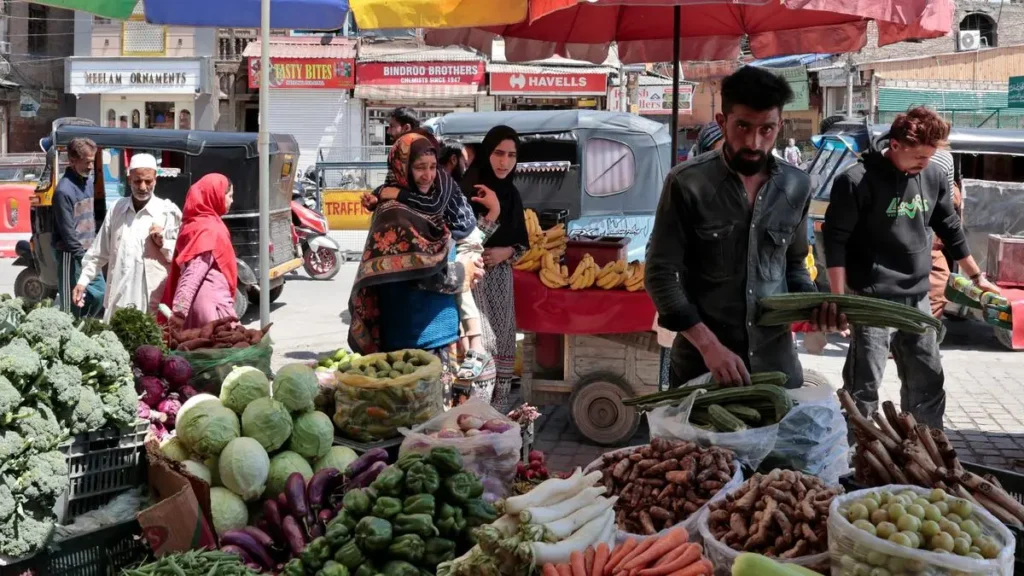Recent Posts
India’s Wholesale Inflation Falls to 0.85% in April


India’s wholesale inflation, as measured by the Wholesale Price Index (WPI), dropped to 0.85% in April 2025, marking a 13-month low. This significant decline from 2.05% in March is primarily attributed to falling prices in food, fuel, and certain manufactured goods.
Key Factors Contributing to the Decline
1. Food Prices
Food inflation eased to 2.55% in April from 4.66% in March. Notably, vegetable prices fell by 18.26%, compared to a 15.88% drop in the previous month. Onion inflation also decreased sharply to 0.20% from 26.65% in March.
2. Fuel and Power
The fuel and power segment saw a deflation of 2.18% in April, reversing a 0.20% rise in March. This decline was driven by reduced prices of mineral oils (-3.95%) and electricity (-1.38%).
3. Primary Articles
The index for primary articles decreased by 0.11% in April, with significant drops in crude petroleum & natural gas prices (-5.31%) and non-food articles (-1.78%).
4. Manufactured Products
While the overall WPI declined, manufactured products saw a modest inflation of 2.62% in April, down from 3.07% in March. Sectors like textiles, pharmaceuticals, and paper products witnessed price decreases, while others like machinery and equipment saw increases.
Implications for Monetary Policy
The Reserve Bank of India (RBI) primarily considers retail inflation, measured by the Consumer Price Index (CPI), when formulating monetary policy. In April, retail inflation eased to 3.16%, the lowest since July 2019, remaining below the RBI’s 4% target for the third consecutive month.
This consistent decline in both wholesale and retail inflation provides the RBI with more room to maneuver. Economists anticipate potential interest rate cuts in upcoming policy meetings to stimulate economic growth. Analysts from various banks predict rate cuts ranging from 25 to 75 basis points, depending on future economic data and monsoon performance.
Economic Outlook
The moderation in inflation is expected to have several positive effects on the Indian economy:
- Consumer Relief: Lower food and fuel prices can increase disposable income, boosting consumer spending.
- Business Confidence: Stable input costs may encourage businesses to invest and expand operations.
- Policy Flexibility: The RBI has greater leeway to implement growth-supportive measures without the immediate concern of rising inflation.
However, global uncertainties and domestic factors like monsoon performance will continue to influence the inflation trajectory and economic growth.
Recent Posts
Categories
- Actor4
- Actress7
- Bank4
- Biography2
- Bollywood4
- Business10
- Company9
- cricket5
- Economy23
- Education6
- Entertainment47
- External Affairs Defence Security1
- Finance1
- Football1
- Health1
- Hollywood2
- Home1
- India70
- india9
- Industry6
- Latest News53
- lifestyle1
- maharashtra1
- market4
- Politicians13
- Politics29
- Press Release287
- Social8
- Sports28
- Stock Marekt18
- Technology25
- Tollywood2
- World40
- world17
Related Articles
MEIL secures bid for India’s first private strategic petroleum reserve
Straightforward Business Report Megha Engineering & Infrastructures Ltd (MEIL) has secured a...
ByNewsium DeskSeptember 16, 2025“Karnataka Secures ₹12 Trillion Investments, Study Finds”
Karnataka has emerged as one of India’s leading destinations for large-scale domestic...
ByNewsium DeskSeptember 4, 2025India’s Forex Reserves Dip $3B to $699.7B: RBI Data
Introduction India’s foreign exchange reserves — often regarded as a cushion against...
ByNewsium DeskJuly 11, 2025KM Birla: US Commerce Secretary ‘Very Positive’ on India-US Ties
Introduction In recent developments, Kumar Mangalam Birla, Chairman of the Aditya Birla...
ByNewsium DeskJune 3, 2025













Leave a comment